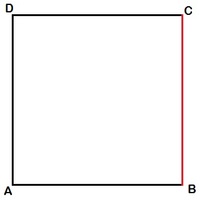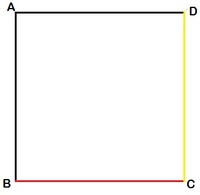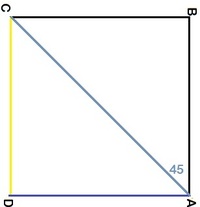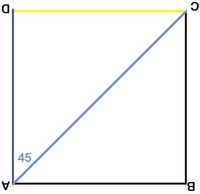Rolling Squares
Unit square is rotated to the right 4 times along its sides, as illustrated above.
What is the distance traced out by point C?
This section requires Javascript.
You are seeing this because something didn't load right. We suggest you, (a) try
refreshing the page, (b) enabling javascript if it is disabled on your browser and,
finally, (c)
loading the
non-javascript version of this page
. We're sorry about the hassle.
Initial Position
Rotation 1 B C as handle, moves through a right angle. Distance covered by C is the arc length subtended by handle B C , i.e. 2 π 
Rotation 2 C D as handle, moves through an right angle. But C doesn't move from its position. So in this case, distance covered by C is 0.
Rotation 3 D C as handle, moves through an right angle.Distance covered by C is the arc length subtended by handle D C , i.e. 2 π 
Rotation 4 As given in the last figure, the new handle is diagonal A C = 2 . In the 4th rotation, A C moves through a right angle since angle BAC is 4 5 ∘ and then angle D A C is 4 5 ∘ too. Hence A C moves through a total of 4 5 ∘ + 4 5 ∘ = 9 0 ∘ . In this case, distance covered by C is the arc length subtended by A C i.e. 2 2 π
So, adding up the distances covered by C in the 4 rotations, we have 2 π + 0 + 2 π + 2 2 π = ( 1 + 2 2 ) π